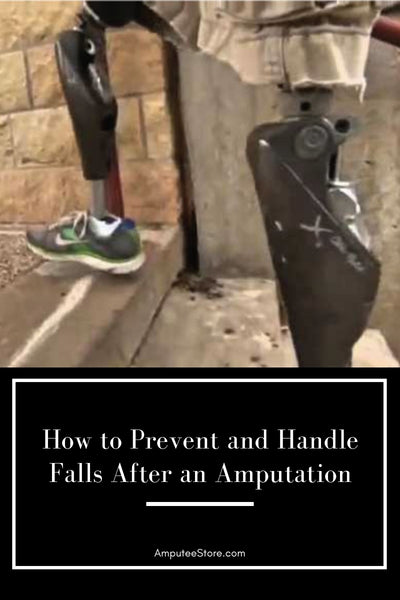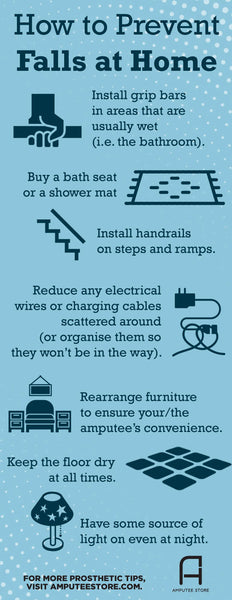How-to Prevent and Handle Falls After an Amputation
At one point or another, we’ve all caught our toe or almost fallen over that last step on our way up or down the stairs. This is an entirely common occurrence and it happens when the brain believes that the body finally reached flat ground, making that last step seem unnecessary. This is the same kind of mind-body miscommunication that takes place after an amputation, which then results in falls. Until prosthetic limbs become uber smart and have sensations letting the brain know where they are in space relative to the rest of your body, numerous falls are a fact of life.

Human beings are hardwired and trained to identify patterns, giving the brain a difficult time realizing that the limb that used to be there is no longer. While it’s easy to get frustrated, there’s absolutely nothing wrong with stumbling—especially in the first few weeks or even months after an amputation. Amputees are typically taught to walk all over again and only practice can ensure that you learn to use what you have.
Post-amputation
Right after therapy, the training for your new life will begin and your first coach will be your physical therapist. During post-op, you are kept in the hospital for observation, with doctors and nurses giving you almost around the clock care. Your team will help you develop the necessary skills you need to navigate around the room. These skills could be something as simple as transferring from your bed to the wheelchair or as complex as reaching for something above your head or picking something up from the floor.
However, keep in mind that we cannot do everything on our own and this especially applies during the early days after your operation. Don’t be afraid to ask for help when having trouble doing particular tasks! Not only will you get things done, but you also lower your risk of falling and hurting yourself even more.
Some things are inevitable and you may still fall—this is entirely normal. What do you do? You simply get back up.
The answer above seems far too simple and for amputees, reality may be a tad more complicated. While you’re at the hospital, ask your doctor for techniques and strategies that can help you get back up. Doctors and physical therapists are the best equipped to give you instructions that would prioritize your overall well-being but particularly, the part of your body that is still in recovery.
Stay calm and collected in the event of a fall and remember what you learned from the doctor. Avoid acting in haste to prevent further injury.
Falls at home
Once you’re out of the hospital, falls may mean more than just a call to the nurses’ station. Here are a few things that can help prevent falls within the home:
1.) Installing grip bars in areas that are usually wet (i.e., the bathroom)
2.) Buying a bath seat or a shower mat
3.) Installing handrails on steps and ramps
4.) Reducing any electrical wires or charging cables scattered around (or organizing them so they won't be in the way)
5.) Rearranging furniture to ensure your/ the amputee's convenience
6.) Keeping the floor dry at all times
7.) Having some source of light on even at night











































































